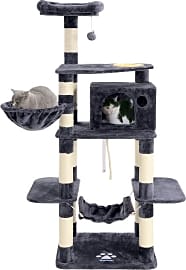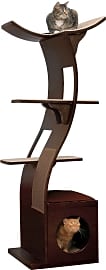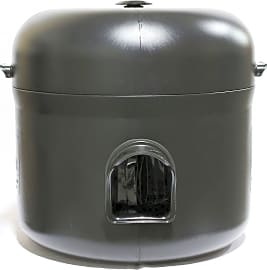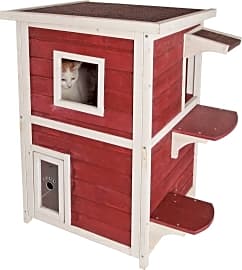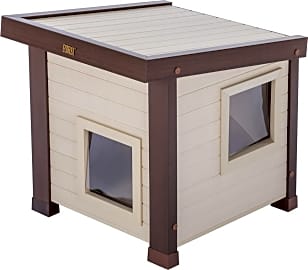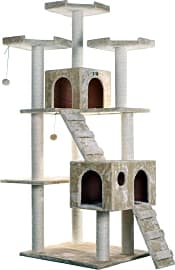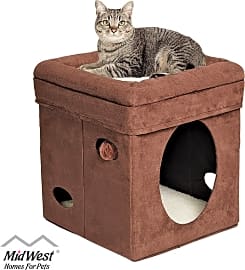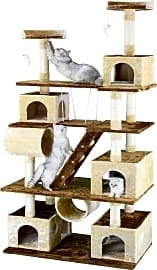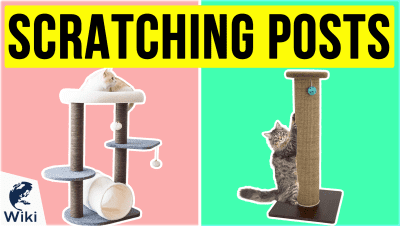The 10 Best Cat Houses

This wiki has been updated 39 times since it was first published in March of 2015. Give your cats a special place to climb, claw, play, rest, and survey their territory without them destroying the furniture in your home or apartment. Our selection of versatile cat houses includes multilevel structures equipped with scratching posts, hammocks, toys, enclosed condos, and soft perches that provide your pets with plenty of mental and physical stimulation. When users buy our independently chosen editorial choices, we may earn commissions to help fund the Wiki.
Editor's Notes
July 15, 2021:
A cat house gives your pet a place to play, relax, and view his kingdom (your house). The top choice for almost any indoor setup is the FurHaven Tiger Tough Playground, partly because it comes in a huge variety of colors and configurations. The Kitty City Cube has multiple walled interior spaces to give your feline some privacy and Refined Feline Lotus is about as close to an avant garde cat tree as we've ever seen. Finally, all cats should remain indoors for their health and safety and that of the local fauna and neighbors' property, but if you must allow your cat to roam outside on its own, the Kitty Tube Generation 4 is a great way for them to keep warm in the winter.
June 24, 2020:
When it comes to animal behavior, I've always considered the differences between dogs and cats to be an interesting dichotomy. Dogs are relatively easy to please when it comes to mental and physical stimulation. Throw Fido a toy, launch a ball his way, or provide him a soft bed to sleep on and he's a happy camper. That isn't to say that cats don't appreciate those things, but they will do so in different ways. Compared to canines, cats are more independent by nature, which means they require furniture that can cater to their clawing, climbing, hiding, and lounging instincts. One way to satisfy these feline urges is to provide kitty with a house all his own. Cat houses often blend the benefits of scratching posts and trees together into a single structure that not only provides mental and physical stimulation, but also saves your furniture from being destroyed by sharp claws.
Several of our options are ideal for multiple cats, including the FurHaven Tiger Tough Playground, Feandrea Tree, and Go Pet Club Tree, all of which offer enclosed condos and multiple platforms for resting and playing.
Both the Kitty City Cube and Midwest Curious Condo are collapsible, the former of which has two levels and machine washable pillows while the latter is equipped with cutouts for playing hide and seek.
We've included the Refined Feline Lotus for its elegant carpeted platforms, each one of which can support 50 pounds. Despite its high price point, this one also makes an attractive addition to a home's modern decor.
The double-insulated design of the Kitty Tube Generation 3 makes it a good choice for sheltering feral cats during the winter.
Finally, the Petsfit 2-Story and New Age Albany offer weatherproof construction that allow them to withstand snow, heavy rains, and windy conditions.
Special Honors
Tuft and Paw Milo Constructed from birch plywood and standing 62 inches tall, the Tuft and Paw Milo cat tree offers house felines plenty of opportunities to maintain their physical and mental health. The structure consists of two covered houses, two perches, and side-by-side scratching posts to keep your pets busy for hours. In addition to furniture, the company also sells a variety of beds, blankets, bowls, collars, and litter box accessories. tuftandpaw.com
Hollywood Kitty Company This boutique manufacturer makes a wide range of colorful and fun toys, structures, and accessories for all kinds of pets. Their cat trees and houses are especially novel, and if you're willing to make an investment, they can accommodate some very interesting custom orders. hollywoodkittyco.com
Looking Down From On High
When a new feline family member meets dogs and small children for the first time, that experience could prove stressful.
The common house cat is quite an interesting animal, full of behavioral complexities that include natural predatory instincts, a strong desire for independence, and a mysterious nature. In addition, a cat loves to climb for the purpose of establishing a clear view of his own vertical territory. However, one potential problem with this is that kitty also loves to climb trees, which can be a dangerous outdoor activity with the potential for accidents. Regardless of how much time your cat may spend indoors, there are plenty of ways to ensure his safety. One great way to avoid watching kitty get stuck in a tree, while still allowing him to satisfy his climbing instinct, is to give him the benefit of his own spacious cat house.
Typically taller than most ordinary cat beds and sometimes referred to as a cat tree, the cat house is a piece of artificial furniture on which a feline can climb, play, and relax. A majority of cat houses consist of a floor-based structure with square-shaped pieces of particle board that are used as either platforms or enclosed boxes for shelter. Depending on the size and style of a particular cat house, these boxes are usually located on different levels of the structure and connected by a series of studs or planks acting as stairs and "elevators". Cats use these elevators to climb and reach the different platforms. The exteriors and interiors of both the stairs and boxes are typically covered in soft carpeting, while the elevators feature abrasive materials like sisal rope, allowing them to double as scratching posts for kitty so he won't ruin the rest of the structure with his claws.
Cat houses are available in several different types, including condos, posts, and themed structures. The condo style is the most popular of the three when it comes to providing vertical space for multiple felines to interact with one another. The most elaborate condos can reach up to seven or eight feet, with multiple shelters for resting and perching.
Ideal for daytime use by one or two house cats, the post is smaller and more simply constructed than the condo, offering a single scratching post and a flat, carpeted platform for lounging. Themed cat houses are often built as condos, but are done so with fun and style as a primary concern. Cat houses can be fashioned to resemble trees, castles, and even skyscrapers.
One major benefit to the use of a cat house is the degree of safety it provides. Because cats have a natural climbing instinct, keeping them from exploring too far and high can pose some difficulty. The more elaborate an indoor structure is, the greater the distraction it will create to keep cats from venturing into places you don't want them to go. The house provides a healthy alternative to climbing actual trees outdoors, minimizing the risk of serious injury. A cat house facilitates a means of escape for an animal who may be new to the household. When a new feline family member meets dogs and small children for the first time, that experience could prove stressful. The cat house essentially acts as an oasis of solitude to which a pet may escape when stuck in the middle of such a chaotic environment. When equipped with sisal scratching posts, the cat house promotes the health and strength of a pet's claws, while preventing the animal from damaging other furniture in your home. The cat tree is also a great space saver, given that it doubles as both a shelter and playground at the same time. Finally, its elaborate design can be used to provide challenges and mental stimulation to a cat, so the animal doesn't get bored.
Keeping Kitty Safe And Comfortable
Materials should be among the most important of considerations when bringing a cat tree into your home. Plywood and genuine woods like cedar are popular choices due to their durability, longevity, and resiliency.
If you own several pets, look for a solution with as high a weight limit as possible.
Consider the degree of support a cat house will offer to single or multiple cats. If you own several pets, look for a solution with as high a weight limit as possible. Some of the largest cat houses support up to 200 pounds, but I wouldn't recommend letting your kitty go on an eating binge just to test the structure's limits.
It's important to realize that cats are territorial creatures. That said, if you own multiple pets, spring for a large condo with several platforms, as the structure will give each animal plenty of space to roam, sleep, and socialize without getting into fights. A tall cat house is also a great option for the timid feline, as she'll have the ability to perch on a high platform and survey the territory below, giving her the confidence that she won't be caught off guard by a surprise attack.
A Brief History Of The Cat House
The cat house is a relatively recent invention, having been developed in 1968 by inventor Frank L. Crow. One of the purposes of Crow's design was to prevent damage to human-grade upholstery in domestic environments.
Crow described his invention as a way to "provide a clawing surface of maximum appeal to a cat," "provide a climbing structure of high appeal and good exercising facility," and "provide a facility for playing, feeding, and sleeping."
Since the late 1960s, there has been an explosion of different sizes, styles, and shapes of the cat house to suit almost any breed or personality. Increasingly complex structures have been engineered with multiple levels and scratching posts, while simultaneously providing a safe haven from which multiple felines may survey their territory with their own space to call home.



